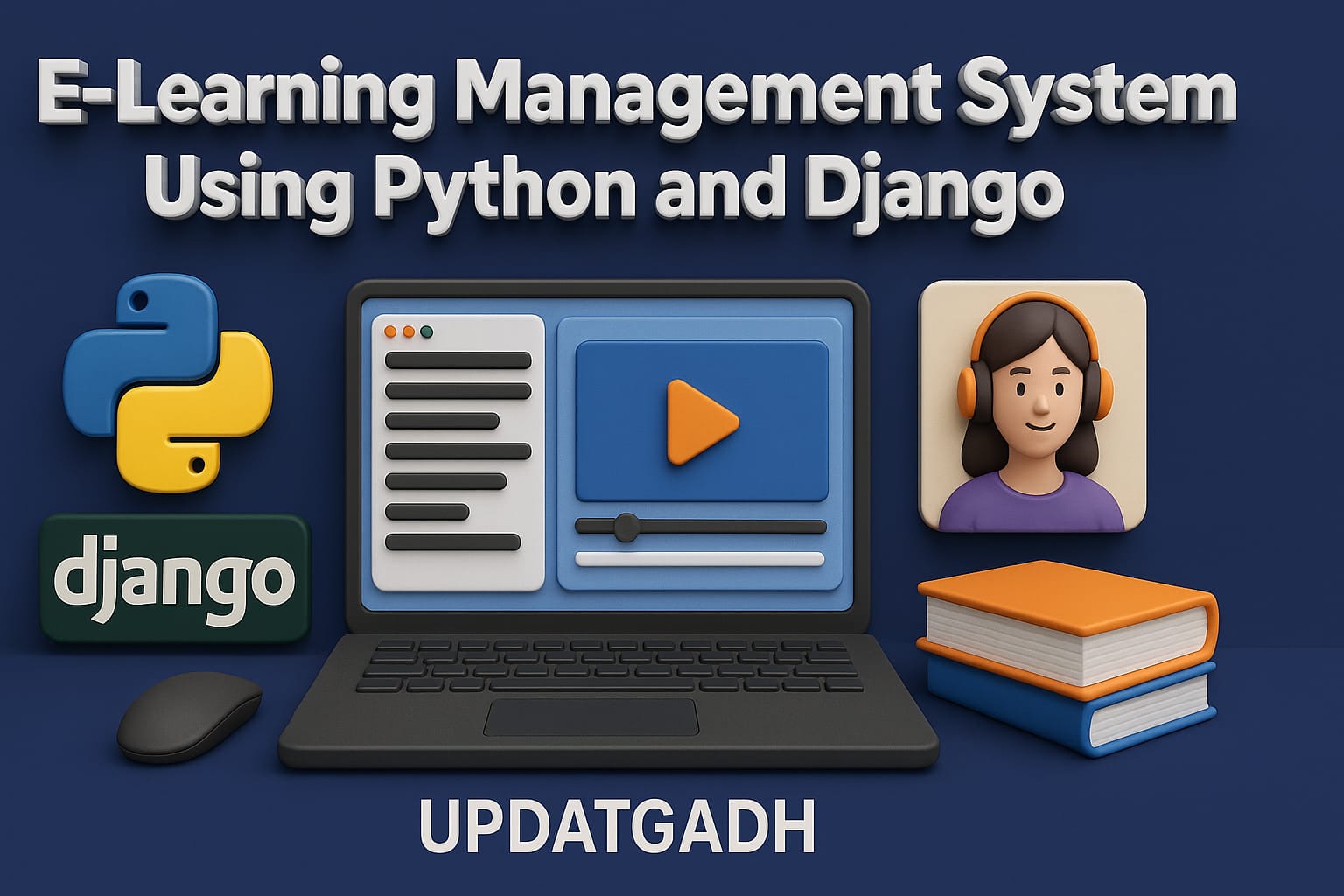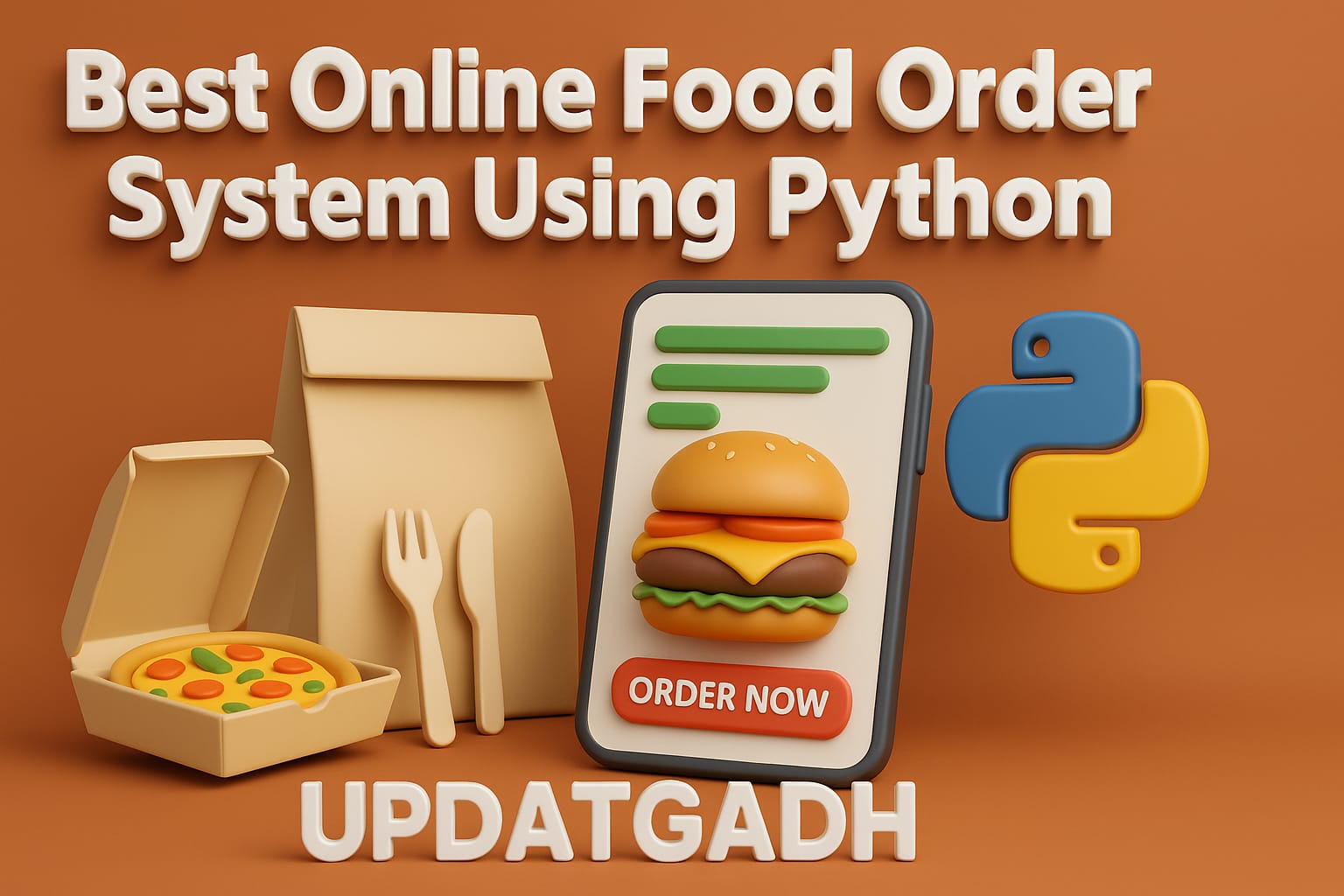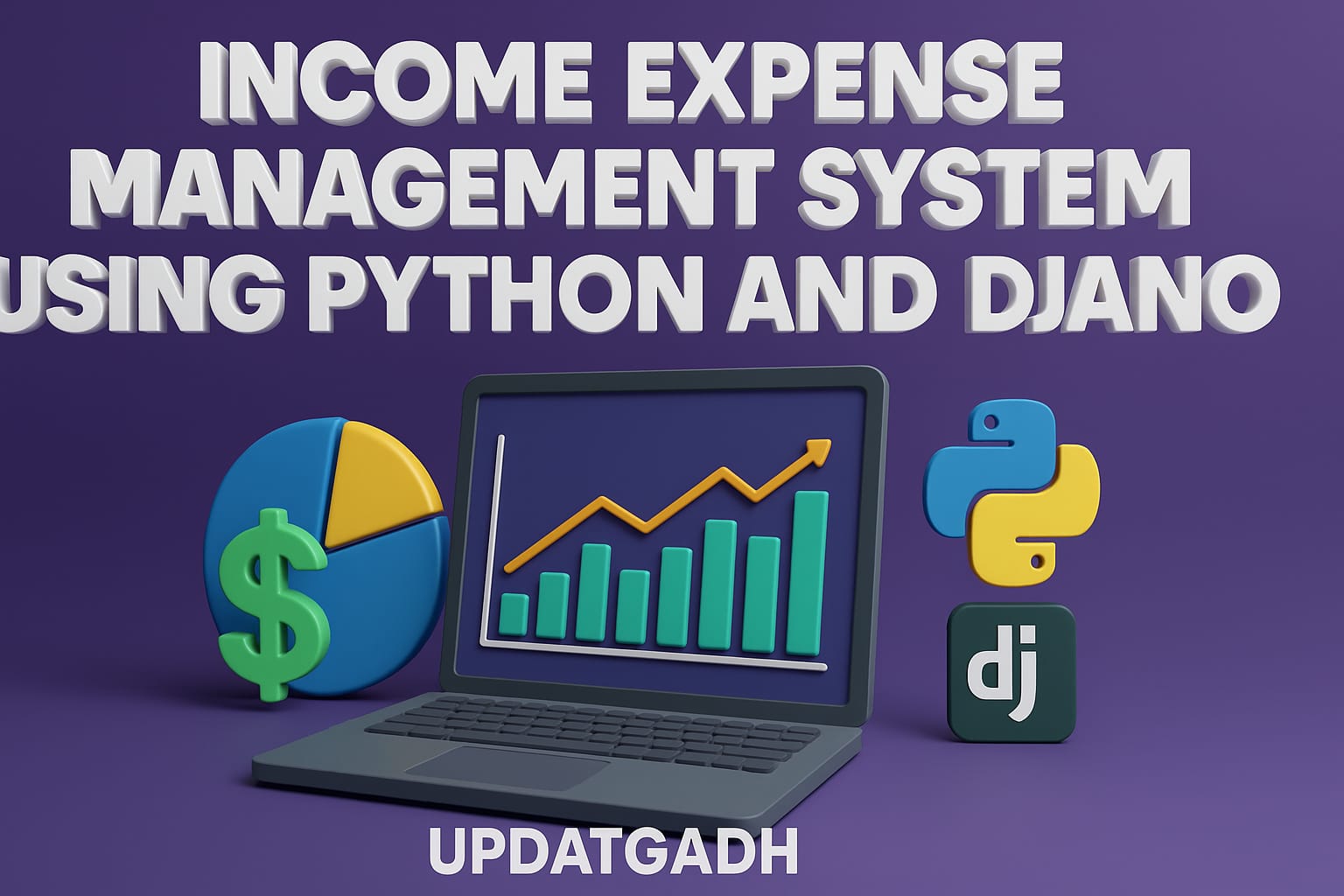
Best E-commerce Website Using Django & Python
E-commerce Website Using Django
A simple project on E-commerce Website Using Django built using Python and Django. This project is designed to help students and beginners understand how a complete end-to-end ecommerce platform functions. By integrating features like product listing, cart management, order placement, admin control, and customer interaction, it provides a realistic view of how online shopping systems are developed and maintained.
The purpose of this project is to demonstrate how Django can be used to create a scalable and secure ecommerce application. It shows how to structure a web platform where customers can browse products, add items to their shopping cart, place orders, and communicate with the store. At the same time, the admin can manage product listings, monitor orders, and oversee the entire shopping process.
From a student’s perspective, the Ecommerce Management System is a practical example of full-stack development. It teaches key concepts such as user authentication, database integration, CRUD operations, and session handling for shopping carts. With Django handling backend logic and data management, and HTML/CSS templates managing the user interface, learners can see how front-end and back-end components work together to deliver a seamless shopping experience.
Best Final Year Project For Data Science :–Click Here
Although designed as an academic project, this system reflects real-world ecommerce workflows. It can be enhanced further by adding payment gateways, product reviews, or inventory tracking. Overall, it provides a strong foundation for students who want to build professional-level ecommerce applications and gain hands-on experience with Django web development.
Project Overview
| Key Details | Description |
|---|---|
| Project Name | ECOMMERCE Management System |
| Language/s Used | Python, HTML, CSS, JavaScript |
| Database | SQLite3 (default Django database) |
| Type | Web Application |
Available Features
This Ecommerce Management System implements essential ecommerce operations for both Customer and Admin roles. Below are the actual features provided inside the system, expanded in detail.
Best Advanced Python Projects:-Click Here
Customer Features
View and search products without login
Customers can freely browse and search for products without creating an account. This open access improves the user experience and allows visitors to explore the store before deciding to register.
Add or remove products from the cart without login
Items can be added to or removed from the cart even without logging in. If a customer adds the same product multiple times, the system intelligently keeps only one entry to prevent duplication.
Must log in to purchase products
Placing an order requires a secure login. This ensures that all purchases are linked to verified customer accounts, allowing for accurate tracking of orders and deliveries.
Create an account and place orders after logging in
New customers can create an account easily. Once logged in, they can place orders and manage their purchases, providing a seamless shopping experience.
See order status such as Pending, Confirmed, and Delivered
Customers can monitor their order progress at every stage—from initial order placement to final delivery—ensuring transparency and trust.
Download invoices for each order
For every completed order, the system allows customers to download a detailed invoice. This feature supports record-keeping and provides proof of purchase.
Send feedback to the admin (even without login)
Customers can share feedback or suggestions with the admin without needing to log in. This makes communication convenient and encourages customer engagement.
Get alerts when trying to purchase without any product in the cart
The system displays an alert if a customer attempts to place an order without adding items to the cart, ensuring smooth and error-free checkout.
Admin Features
Secure admin login using Django’s superuser credentials
Admins can log in securely with Django’s superuser authentication, providing full control over the ecommerce platform.
Dashboard showing key statistics
The admin dashboard offers a quick view of total registered customers, available products, and all placed orders, helping admins monitor business performance efficiently.
Add, view, edit, and delete products
Admins can manage the product catalog by adding new products, editing details of existing ones, or deleting outdated items.
View, edit, and delete customer details
All customer records can be viewed, updated, or removed by the admin to maintain accurate and secure user data.
View and delete orders
Admins can access a complete list of customer orders and delete them when necessary, ensuring proper order management.
Change order status (Pending, Confirmed, Out for Delivery, Delivered)
Order statuses can be updated to reflect real-time progress, allowing customers to track the delivery process accurately.
View feedback sent by customers
All feedback submitted by customers is accessible to the admin, helping improve services and address issues promptly.
Additional Built-in Checks
Automatic deletion of related orders when a customer is removed
If the admin deletes a customer (for example, due to fraud detection), all associated orders are automatically removed. This keeps the database clean and consistent.
Automatic removal of products from orders when a product is deleted
If a product is deleted from the system, any related items in existing orders are also automatically removed, preventing broken links and inconsistencies.
Download New Real Time Projects :–Click here
These comprehensive features make the Ecommerce Management System a fully functional and educational project. Students working with Python and Django can learn how to create secure, scalable ecommerce platforms while understanding real-world requirements such as inventory control, order processing, and user management.
Installation Guide (VS Code)
Follow these step-by-step instructions to set up and run the project in Visual Studio Code.
1. Install Python
Install Python 3.7.6 or higher.
While installing, tick Add to PATH.
2. Open the Project in VS Code
- Extract the downloaded project folder.
- Open VS Code.
- Click on File > Open Folder and select the extracted folder (ecommerce-master).
3. Create a Virtual Environment (Recommended)
Open VS Code terminal and run:
python -m venv venv
Activate the environment:
- On Windows:
venv\Scripts\activate
- On macOS/Linux:
source venv/bin/activate
4. Install Required Dependencies
Inside the terminal, execute:
pip install -r requirements.txt5. Database Migrations
Run these commands to create database tables:
py manage.py makemigrations
py manage.py migrate
6. Create an Admin User
To create the admin account, run:
py manage.py createsuperuser
Provide username, email, and password as prompted.
7. Run the Development Server
Finally, start the server:
py manage.py runserver
Open your browser and visit:
http://127.0.0.1:8000/
Your ECOMMERCE Management System is now ready to use.
Usage
This project offers two main roles—Customer and Admin—each with specific responsibilities.
Best Final Year Project For JSP :- Click Here
For Customers
- Browsing Products: Customers can browse or search products even before logging in.
- Cart Management: Items can be added or removed from the cart without login. Duplicate additions are automatically restricted.
- Ordering: When ready to purchase, the customer must create an account and log in.
After login, they can place an order and view the order’s real-time status. - Invoice and Feedback: Customers can download their order invoices and send feedback directly to the admin without needing to log in.
For Admin
- Product Management: Admins can add, edit, or delete products to maintain an updated inventory.
- Customer Management: They can view, update, or delete customer details. Fraudulent users can be removed, and their orders are auto-deleted.
- Order Management: Admins can view and delete orders and change their status from Pending to Delivered.
- Feedback Handling: Admins can view all customer feedback for improvements.
Best Final Year Project For JAVA :- Click Here
Why This Project is Useful for Students
From a student’s perspective, building and understanding this project provides real-world development experience.
Here are key reasons why it is valuable:
- Full-Stack Learning
Students get hands-on experience with Django’s MVC structure, database handling, and front-end integration.
They learn how backend logic and frontend templates connect to create a seamless user experience. - Practical Ecommerce Flow
The project simulates a complete ecommerce cycle—product browsing, cart handling, order placement, and admin management—making it highly relatable to real business scenarios. - Database Management Skills
The use of SQLite3 trains students to handle relationships between products, orders, and users, and teaches how to automatically update or delete related records. - User Authentication and Authorization
Implementing login and role-based access helps students understand the importance of secure authentication. - Error Handling and Validation
Built-in checks (like ensuring the cart is not empty before purchase) show how to handle real-life edge cases. - Deployable Foundation
Students can use this as a base project and scale it into a more advanced ecommerce system with payment gateways and enhanced security features.
We have Best projects Available in all languages:–Click Here
Key Takeaways for Real-Life Application
- Online Shopping Systems: The project mirrors the core functionality of commercial online stores.
- Inventory and Order Control: Admin features provide a strong understanding of inventory management.
- User-Centric Design: The project focuses on simple and clear navigation, essential for customer satisfaction.
Best Final Year Project For SPRINGBOOT:–Click Here
e commerce website project in python with source code
django e-commerce website source code
e commerce website using django project github
e commerce website project in python github
django e-commerce website tutorial pdf
e commerce website using python flask
django ecommerce template
django e-commerce open-source
django e commerce website tutorial pdf








Post Comment